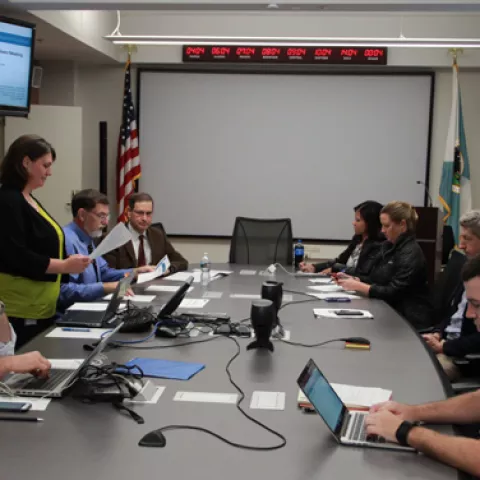
WASHINGTON - The newly-formed Interagency Bolt Action Team convened its second meeting today at the Department of the Interior’s headquarters in Washington to assess the current state, and determine next steps. The team was formed in response to a bolt problem that has been plaguing subsea equipment. Bolt failures have been gaining domestic and international media attention following a public forum the Bureau of Safety and Environmental Enforcement (BSEE) held in August to highlight the problem.
The Bureau reached out to federal agencies and national laboratories that have metallurgical or engineering expertise. The meeting today included a diverse set of agencies, including the Department of the Navy, Department of Energy, the National Institute of Standards and Technology, and the U.S. Coast Guard.
A team charter and synopsis of the available information pertaining to the problem will be prepared to inform all members of the extent of the issue and to set goals to develop short term solutions to the risk offshore.
“The nature of the dialogue today underscores the value of getting a group like this together to resolve this complex issue,” said BSEE Director Brian Salerno.
Looking long term, the Bureau has also awarded a contract with the National Academy of Sciences to hold a root cause analysis workshop and follow-on study to address bolt failure issues and advance the understanding of subsea connector performance. The objective is to determine the optimal material properties and coating requirements associated with fasteners used in critical safety components and equipment in offshore oil and natural gas subsea operations over the next 18 months. The Academy, through the National Academy of Engineering and the National Materials and Manufacturing Board, will develop and advance an understanding of the issues associated with bolt material failures and equipment reliability issues, and discuss possible paths for mitigating risks associated with bolts used in subsea oil and gas operations.
